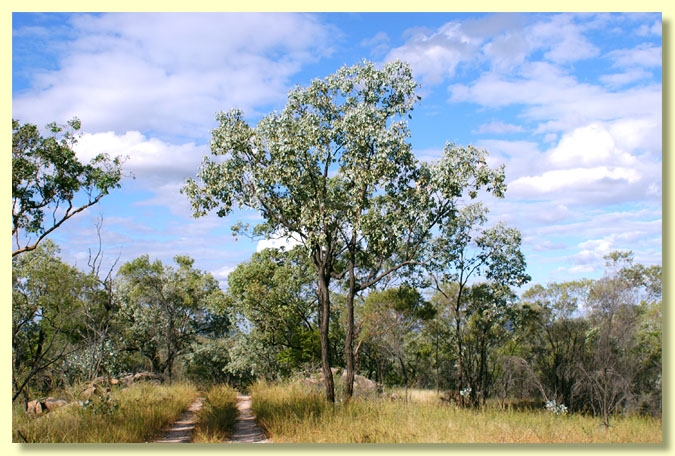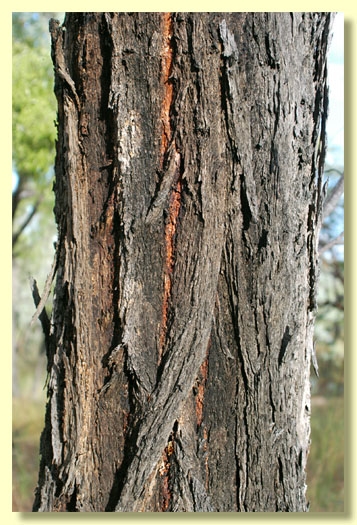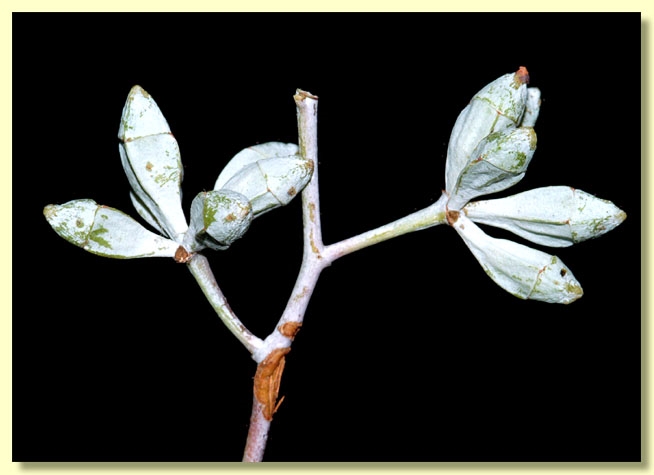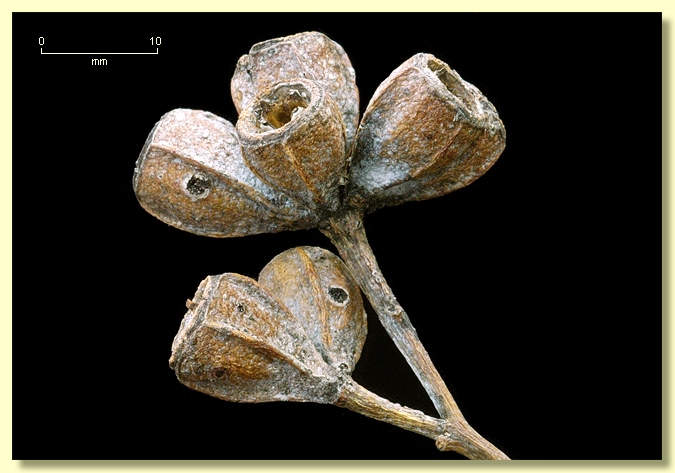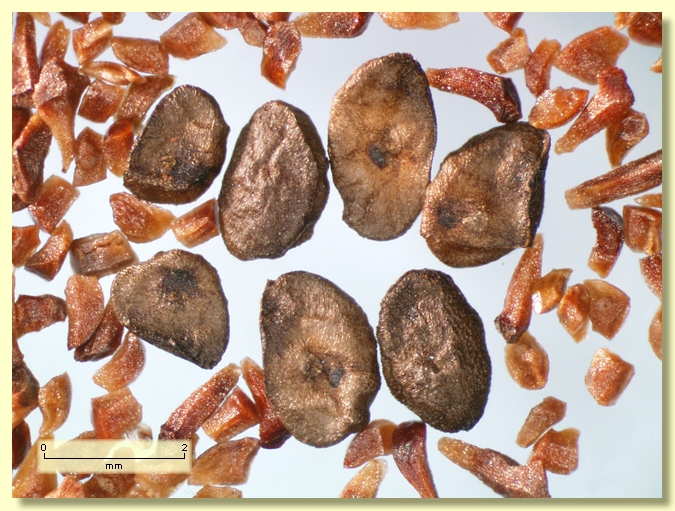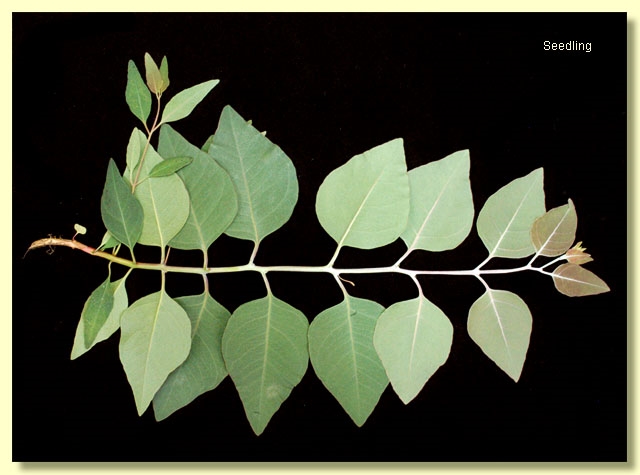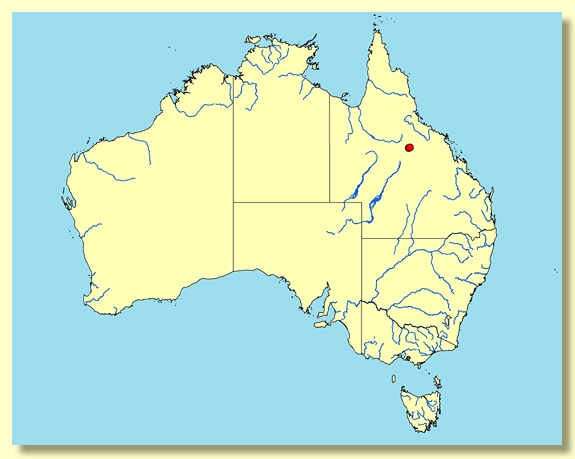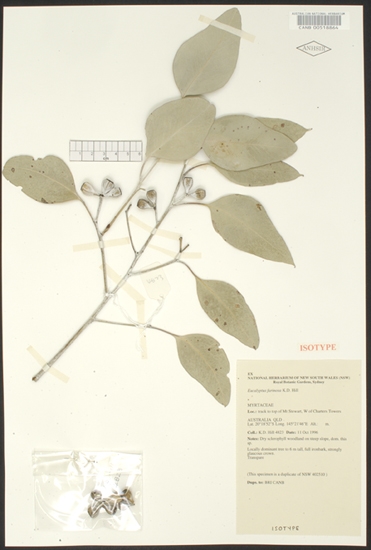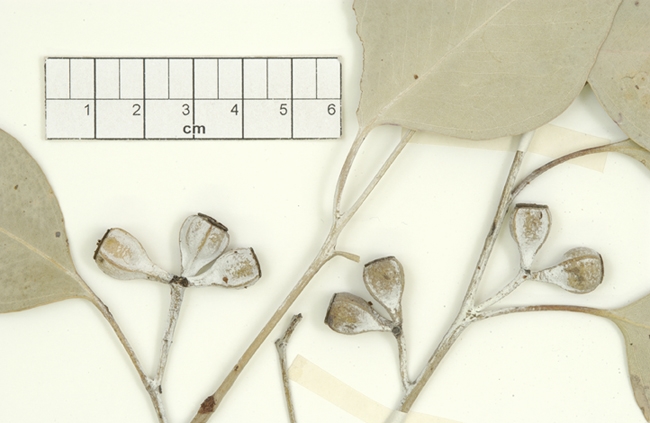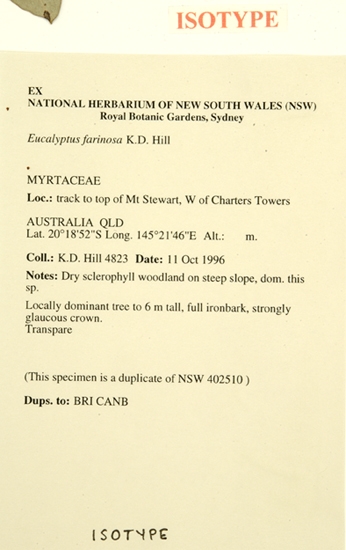Eucalyptus | Symphyomyrtus | Adnataria | Apicales | Siderophloiae | Subglaucae
Euclid - Online edition
Eucalyptus farinosa
A small tree to 9 m tall. Forming a lignotuber.
Ironbark to the small branches, dark grey to black; branchlets glaucous.
Juvenile growth (coppice or field seedlings to 50 cm): stem round in cross-section, glaucous; juvenile leaves distinctly petiolate, opposite to alternate, orbicular, 6.5–11 cm long, 6–11 cm wide, base rounded to truncate to shallowly lobed, glaucous.
Adult leaves alternate, petiole 1.5–3.5 cm long; blade elliptical to ovate to broadly lanceolate, 6–12 cm long, 2.2–5(6) cm wide, base tapering to petiole, concolorous, dull, glaucous, side-veins normally at an angle less than 45° to midrib, densely to very densely reticulate, intramarginal vein parallel to and just within margin, oil glands sparse and intersectional.
Inflorescence terminal compound or axillary compound or axillary single umbels, peduncles 0.5–1.5 cm long, buds 7 per umbel, pedicels 0.2–0.5 cm long. Mature buds obovoid to fusiform, hypanthium with four longitudinal ribs, 0.7–0.8 cm long, 0.4–0.5 cm wide, glaucous, scar present (first operculum sheds very early in bud development), operculum conical, stamens irregularly flexed, anthers cuboid, adnate, slits or pores separate, style long, stigma pin-head shaped, locules 4, the placentae each with 4 vertical ovule rows. Flowers white.
Fruit pedicellate (pedicels 0.2–0.4 cm long), cup-shaped to barrel-shaped, ribbed longitudinally, glaucous, 0.7–0.9 cm long, 0.6–0.9(1) cm wide, disc descending, valves 4, tips near the rim or enclosed.
Seeds brown, 1.8–2.5 mm long, flattened-ovoid, dorsal surface shallowly reticulate, hilum ventral.
Cultivated seedlings (measured at ca node 10):cotyledons small, reniform; stems square in cross-section, white with wax; leaves always petiolate, opposite for ca 6 nodes then alternate, broadly ovate, 5.5–8 cm long, 3.3–5.4 cm wide, base broadly tapering, rarely rounded, green with some white wax on petiole, midrib and main lateral veins otherwise dull to slightly glossy.
Flowering has been recorded in October.
A small to medium-sized ironbark tree known only from one location in the headwaters of the Campaspe River in the Lolworth Ranges near Mt Stewart, north-west of Homestead in North Queensland. Characterised by its relatively large, distinctly petiolate, broadly lanceolate to ovate, glaucous adult leaves, its broad distinctly petiolate, orbicular, glaucous juvenile leaves and glaucous buds that are square in cross-section.
It is probably closest to E. quadricostata, both species having buds and fruit that are square in cross-section. E. quadricostata differs from E. farinosa by having slightly narrower, dull green adult leaves and slightly narrower glaucous juvenile leaves (adult leaves lanceolate in E. quadricostata and broadly lanceolate to ovate in E. farinosa, juvenile leaves ovate to sometimes almost orbicular with rounded to tapering bases in E. quadricostata and orbicular with rounded to truncate to shallowly lobed bases in E. farinosa). Two other ironbarks with large juveniles similar to E. farinosa are E. melanophloia and E. shirleyi. Both these species are easily separated by having opposite, sessile leaves in the mature crown.
Another ironbark which grows close to E. farinosa and has relatively large juvenile leaves is E. paedoglauca. It differs by having buds and fruit round in cross-section and ovate to broadly lanceolate juvenile leaves. E. farinosa is known to integrade with another ironbark south of Mt Stewart and also east of its main area of occurrence.
MORE ABOUT IRONBARKS
Eucalyptus farinosa: Latin farinosus, floury or mealy, referring to the thick white coating on the leaves, buds and fruit.

